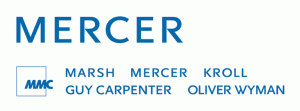 With health reform uncertainties, growing health regulations, and ever-increasing costs, employers who sponsor health plans for their workforce will continue to cover active employees. That is, at least until 2017, according to the crystal ball used by Mercer, explained in the Health & Benefits Perspective called Emerging challenges…and opportunities…in the new health care world, published in May 2011.
With health reform uncertainties, growing health regulations, and ever-increasing costs, employers who sponsor health plans for their workforce will continue to cover active employees. That is, at least until 2017, according to the crystal ball used by Mercer, explained in the Health & Benefits Perspective called Emerging challenges…and opportunities…in the new health care world, published in May 2011.
Note that it’s “active” employees who Mercer expects will retain access to health benefits. For retirees, however, it’s another story. They need to be ready to take on more responsibility, financially and perhaps going-to-market to select coverage, while employers may continue some level of subsidy to help pay for that coverage.
For active employees, though, the “new health care world” that Mercer sees will feature greater focus on defined contribution plans that limit employers’ liability. In addition, these plans will be based on novel benefit designs, health provider networks, population health programs, and “nudges” via carrots and sticks to encourage employees to make sound health decisions.
Mercer’s case for growth in defined contribution plans is 4-fold: the plans would,
- Generate savings over time
- Be easily administered
- Align with pay and benefits
- Be transparent and easy to understand.
Beyond 2015, Mercer envisions that employers will be looking to Accountable Care Organizations (ACOs) and new delivery models that improve efficiencies and take on quality for their enrollees.
Health Populi’s Hot Points: Ultimately, Mercer says, “innovation and value will become imperatives.” What will drive both innovation and value will be the ability to align incentives for providers to change clinical workflow and decision making, and engage patients in self-care when sick, and disease prevention and whole health when well. Technology must underpin these efforts: from providers sharing patient data for care management, to workers knowing their numbers and self-tracking. That alignment can only happen when health plans are designed to achieve those ends — that’s where the value is generated. And defined benefit plans, as they have been largely configured to-date, haven’t achieved those outcomes. It’s in the creative ‘nudging’ where the value is born. As user-centered design has worked well in consumer electronics and fast-moving consumer goods, health benefit designers should get close and personal with prospective enrollees to learn just what features would actually move them to co-create their own health.




 Interviewed live on BNN Bloomberg (Canada) on the market for GLP-1 drugs for weight loss and their impact on both the health care system and consumer goods and services -- notably, food, nutrition, retail health, gyms, and other sectors.
Interviewed live on BNN Bloomberg (Canada) on the market for GLP-1 drugs for weight loss and their impact on both the health care system and consumer goods and services -- notably, food, nutrition, retail health, gyms, and other sectors. Thank you, Feedspot, for
Thank you, Feedspot, for  As you may know, I have been splitting work- and living-time between the U.S. and the E.U., most recently living in and working from Brussels. In the month of September 2024, I'll be splitting time between London and other parts of the U.K., and Italy where I'll be working with clients on consumer health, self-care and home care focused on food-as-medicine, digital health, business and scenario planning for the future...
As you may know, I have been splitting work- and living-time between the U.S. and the E.U., most recently living in and working from Brussels. In the month of September 2024, I'll be splitting time between London and other parts of the U.K., and Italy where I'll be working with clients on consumer health, self-care and home care focused on food-as-medicine, digital health, business and scenario planning for the future...